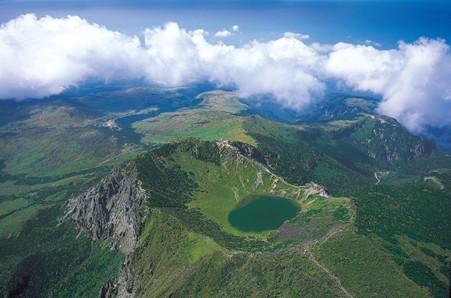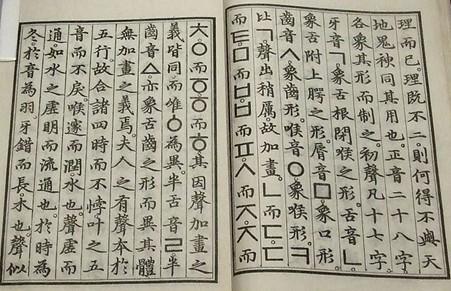Facts and figures
| Official name | Republic of Korea |
| Country code | KR |
| Area | 100,210km2 |
| Coastline | 2,413km |
| Population | 51,780,579 |
| Capital city | Seoul |
| Timezone | UTC+09:00 |
| GDP | $USD 1,712.79 billions |
| Currency | KRW (South Korean won ₩) |
| Government type | Presidential Republic |
| Notable people |
|
The ‘Know Your Region’ series is designed to support unit and individual professional military education on the Indo-Pacific region. It’s important for all serving members of our military to have a foundational knowledge of the countries and issues in the Indo-Pacific.
On this page:
- Summary
- A short history
- People and Society
- National Psyche
- Customs and traditions
- Media and Internet
Summary
South Korea, officially the Republic of Korea (ROK), is located at the southern end of the Korean Peninsula. The country is bordered by the Democratic People’s Republic of Korea (North Korea) to the north, the East Sea (Sea of Japan) to the east, the East China Sea to the south, and the Yellow Sea to the west. Aside from North Korea, South Korea’s closest neighbours are Japan, China, and Russia. The total land area is approximately 100,000 km2, less than half the size of the Australian state of Victoria. Nearly 70% of the country is covered in rugged mountains that stretch from the north to the south. The highest peak is the extinct volcano ‘Mount Halla’ on Jej Island, which stands at 6,398 feet (1,950 meters) above sea level.

Image: Mount Halla, Jej Island. Source - Wikipedia
The population is estimated at 51.7 million (2025), which is equal to 532 people per square kilometre. Approximately 80% of the population live in urban areas with nearly 10 million living in the country’s capital, Seoul.
A short history
South Korea was historically ruled by various kingdoms, including Goguryeo, Baekje, and Silla – also known as the Three Kingdoms of Korea (1st century BCE–7th century CE). Silla eventually unified much of the peninsula in 668 CE, marking the beginning of a unified Korean state. This was followed by the Goryeo Dynasty between 918–1392, which saw the rise of Buddhism and the invention of the famous Korean celadon pottery. The Joseon dynasty was the last and longest-lived imperial dynasty in Korea, (1392–1897). Regarded by many as the Golden Age of Korea, it left a lasting impression on Korean culture, system of government, and societal values.
During the late 19th and early 20th centuries, Korea faced growing threats from foreign powers, particularly Japan, China, and Russia. In 1910, Japan formally annexed Korea, beginning a brutal colonial rule that lasted until the end of World War II. Under Japanese occupation, Koreans suffered economic exploitation, cultural suppression, and forced labour. Many resistance movements emerged at this time, both within Korea and abroad, including the March 1st Movement of 1919 that included a series of mass protests.
Korea was liberated by the allied forces following Japan’s 1945 WWII defeat; however, there was no post war plan, and the country was divided along the 38th parallel into two zones of occupation. The Soviet Union administered the north, while the U.S controlled the south.
By 1948, it was clear that reunification would not be possible due to the stark ideological differences between the occupying powers. In the South, an American-backed government was established, led by Syngman Rhee, while in the North, a Soviet-backed government was formed under Kim Il-sung.
On 25 June 1950, Kim Il-sung, backed by the Soviet Union and China, launched a full-scale invasion of South Korea, igniting the Korean War. The invading forces advanced at lightning speed, capturing Seoul in only three days. In response, the United Nations, led by the U.S., sent troops to support the South. They succeeded to push north, however, the momentum changed again when China sent waves of soldiers across the border in support of North Korea.
Despite fighting for a year, neither side could establish a decisive advantage. Fierce battles were fought along the 38th parallel until eventually in 1953, the war ended in an armistice. A Demilitarized Zone (DMZ) between the opposing sides was established, however, no formal peace treaty has ever been signed and so both countries are technically still at war today. The Korean war was brutal and destructive, with massive casualties on both sides, mostly civilian.
The 1960s and 1970s saw South Korea transform from a struggling agrarian economy to a manufacturing powerhouse, with a focus on exports, technology, and heavy industries. During the 1980s, continued pressure from the population and international allies led to significant democratic reforms. In 1987, South Korea held its first direct presidential election marking an end to authoritarianism.
By the turn of the 21st century, South Korea had established itself as a leader in high-tech industries, boasting one of the world's fastest-growing economies.
People and Society
South Korea’s population is almost entirely homogenous. Most people are ethnically Korean with only 2% being Japanese and 0.3% belonging to other nationalities. There is also approximately 7.5 million Koreans living abroad. The national language of South Korea and North Korea is Korean, also referred to as Hangul. While both countries share the same language, there has been some divergence since the 1950s, especially in terms of vocabulary.

Image: Hangul Script – Source Wikipedia
South Korea does not have an official religion. Those who practice a faith are generally Buddhists or Christians, though most of the population have no religious affiliation.
National Psyche
South Korea’s national psyche is deeply shaped by its history and strong collectivist values. Having endured centuries of foreign invasions, colonial rule, and the devastation of the Korean War, South Koreans have developed a strong sense of perseverance, known as “han” – an emotional resilience rooted in historical suffering. This collective mindset has strengthened the country’s determination to succeed, seen largely during its post war economic and social transformation, referred to as the “Miracle on the Han River.” While being one of the greatest success stories of the modern era, South Koreans, particularly the older generation, have made many sacrifices.
South Koreans are known for their extreme nationalism, incredible work ethic and intense focus on Korean prosperity. As 99.7 % of the population share the same ethnicity, there is a strong common identity and social unity. Despite an influx of Western values into South Korea’s culture, the society is much more restrained and conservative compared to other western democracies.
The influence of Confucian values has instilled a strong sense of discipline, respect for hierarchy, and dedication to academic and professional success. Korea has a well-developed educational system that produces an incredibly diligent and competent workforce. Children are expected to excel academically from an early age to ensure a successful future. Being busy and prosperous is valued highly; however, this has led to high stress levels and concerns about work-life balance.
Customs and Traditions
South Korea’s customs and traditions are an interesting fusion between east and west. Music, dance, and the fine arts have always been celebrated and play a crucial role in South Korean culture.
Buchaechum (fan dance)
Buchaechum is one of South Korea’s most visually captivating dances, performed by dancers dressed in colourful hanbok (traditional Korean clothing) holding large, beautifully decorated fans. The dancers use their fans to create fluid, wave-like movements and intricate formations that resemble flowers, birds, or butterflies. Originating from a mix of court and folk-dance traditions, Buchaechum is often performed at cultural festivals and celebrations. Other traditional dances include the Samgo-Mu (Korean Drum Dance), Seungmu (monk dance), Salpuri (Shamanistic Spirit-Cleansing Dance), and Talchum (Mask Dance).
K-POP
K-Pop is a modern South Korean music genre which includes a range of musical styles, including hip-hop, R&B, EDM, and rock. Originating in South Korea in the 1990s, K-Pop gained international recognition in the 2000s with groups like BIGBANG, Girls’ Generation, and Super Junior, but it truly exploded worldwide in the 2010s. Social media platforms such as YouTube and TikTok have played a large role in its success, helping songs like PSY’s "Gangnam Style" and BTS’s "Dynamite" break records. Gangnam Style was the first song to exceed 1 billion views on YouTube.
Holidays
Traditional Korean holidays and celebrations also play a significant role in maintaining cultural heritage. Seollal (Lunar New Year) and Chuseok (Korean Thanksgiving) are two of the most important holidays, where families gather to pay respects to their ancestors through ancestral rites called charye. People wear traditional clothes, prepare special foods, and play games like yut nori, a traditional Korean board game.

Image: A game of yut with the sticks cast as a do – source Wikipedia
Another custom, doljanchi (a baby’s first birthday celebration), is also an important celebration. Before Korea became a developed country, infants often fell victim to disease and starvation. In the early 1800s, every second child in South Korea died, and even in the 1950s, the infant mortality rate was an alarming 26%. Therefore, an infant’s first 100 days (baek il) was seen as special, and making it to a year was a major milestone to be celebrated even in the humblest of households.
Media and Internet
South Korea is known for having one of the fastest and most advanced internet infrastructures in the world. With nationwide access to high-speed broadband and widespread 5G connectivity, the country consistently ranks among the top nations for internet speed and penetration. The government and private companies, such as SK Telecom, KT, and LG Uplus, have invested heavily, ensuring that even rural areas have reliable internet access. Public Wi-Fi is widely available, including in subways, cafes, and public spaces.
In addition to internet coverage, South Korea has a highly developed mobile phone network, with nearly universal smartphone usage. Major cities like Seoul, Busan, and Incheon have extensive 5G coverage, while 4G LTE remains strong in suburban and rural areas. South Korea’s strong telecom infrastructure has also allowed for the rise of super apps like KakaoTalk, which integrates messaging, payments, and transportation services into one platform.
Press freedom
Despite its technological advancements, South Korea ranks 62 in the World Press Freedom index (2024). The government enforces strict laws on online content, including the blocking of pro-North Korean websites and material deemed inappropriate. Defamation laws in South Korea are also stringent, making it possible for individuals to face legal consequences for online speech, even if the statements are true. While these laws are intended to prevent cyber-bullying and misinformation, critics argue that they can sometimes limit free expression and can be weaponised against individuals and groups.
Press freedom in South Korea has seen improvements over the years, but concerns remain about government influence and corporate pressure on the media. Journalists sometimes face challenges when reporting on politically sensitive topics. Large media conglomerates, some with ties to the government, control major television networks and newspapers, which can lead to biased reporting. However, independent and digital media outlets have grown in popularity, providing alternative perspectives and investigative journalism.
For more general information on South Korea, see resources below:
Videos
- 15 Fascinating Facts About the Joseon Dynasty – Korea’s Golden Age
- Introducing South Korea
- History of North and South Korea
- KPOP HISTORY in 20mins | From SeoTaiji to BTS
Articles:
Know your region
Know Your Region series gives you a shortcut to understanding other nations in the Indo-Pacific region.









